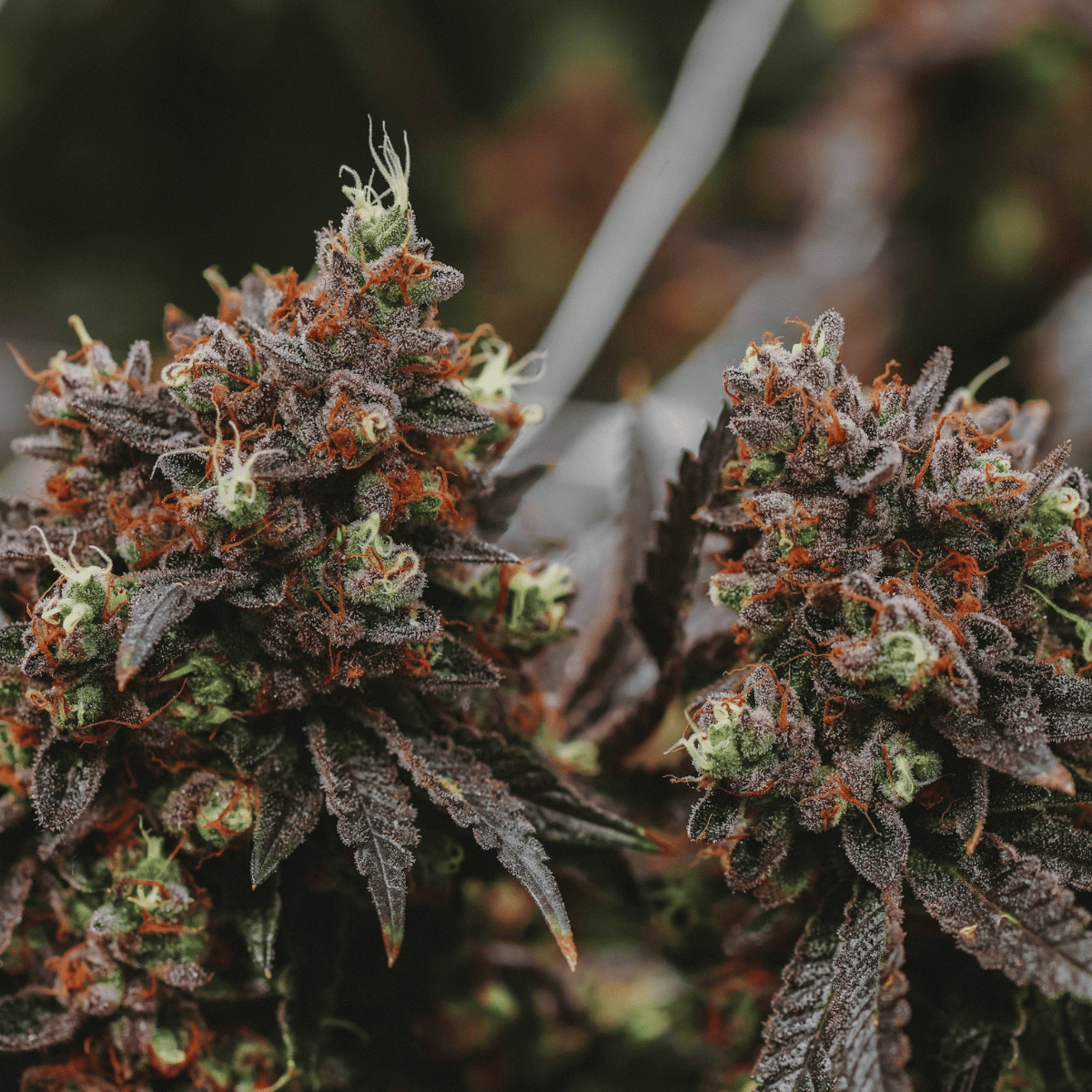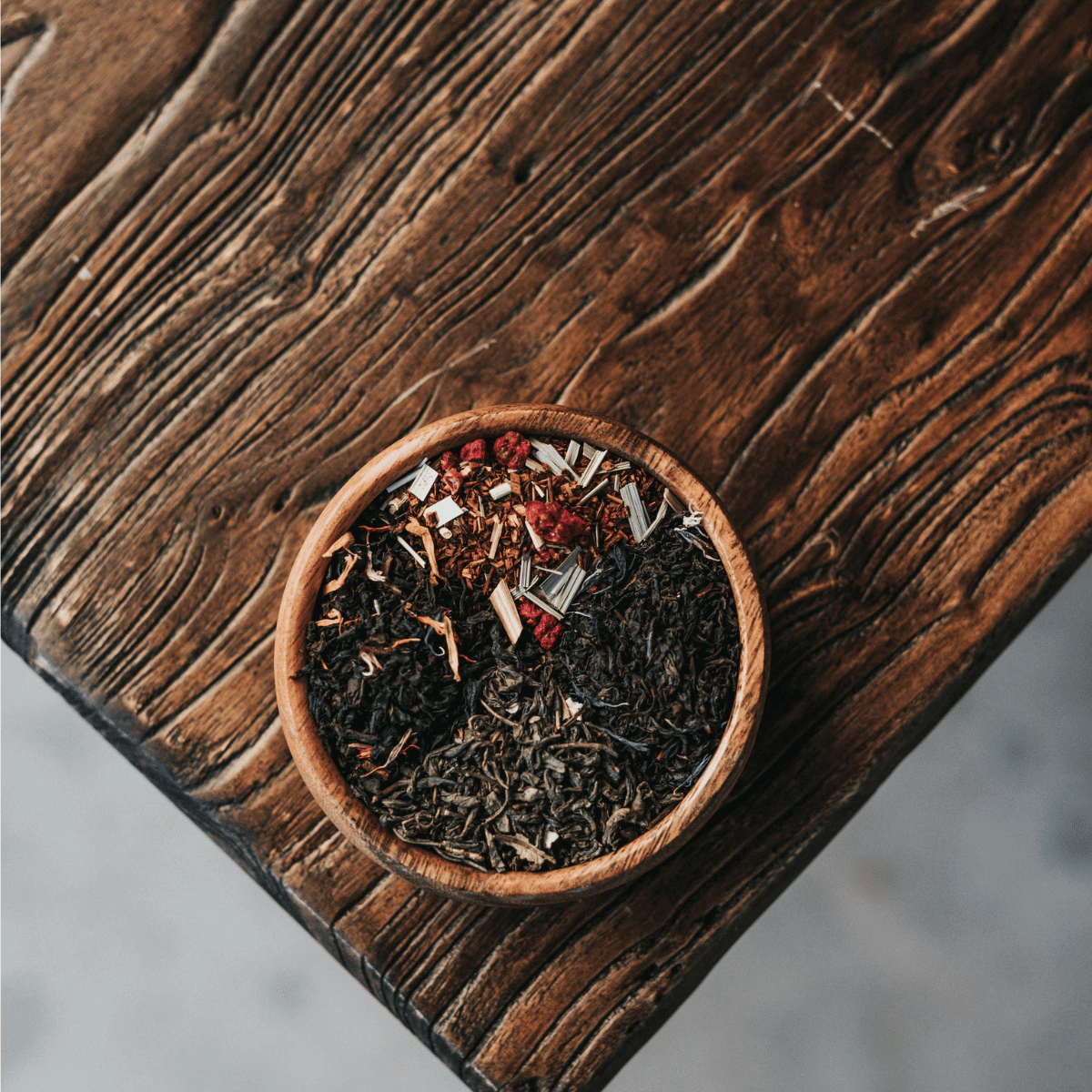Lavender is known for many widespread uses, from perfumes to cooking to natural healing, but did you know that Lavender is also a great smokable herb? In this article we'll answer a ton of questions around this popular herb part of the mint family and rely our information on peer-reviewed studies, credible research and we certainly won't resort to trying to convince you to smoke lavender with non-evidence based medicinal properties or health benefits.
Is it safe to smoke lavender?
At the end of the day, all evidence points to the simple fact that inhaling any type of smoke, with or without psychoactive effects, is simply not beneficial to your body due to carbon monoxide, tar and other chemical compounds emitted during the combustion process.
Is lavender addictive?
That's one of the main "real" advantages of smoking lavender; it doesn't contain nicotine, so you can't get addicted or live through any type of withdrawal symptoms like with tobacco cigarettes. So if you ever become a really intense lavender smoker where you might tell yourself you need to quit, you're all good bud.
What type of lavender can you smoke?
Scientifically known as lavandula angustifolia, lavender is a medicinal herb and a flowering plant that’s part of the mint family. Its strong, aromatic smell and distinct color are its most identifiable traits. Grown as a flower in small bushes, lavender was primarily found in northern Africa, the Mediterranean and Indian mountain hills and mountain ranges. However, it’s now grown all over the world due to its popularity and it being so sought after. It’s part of the flowering plant in the mint family and are similar to sage or peppermint.
Lavender properties and medicinal uses
Much like other notable smokable flowers like chamomile, the flowers and leaves of lavender are used throughout numerous cultures around the globe in aromatherapy due to the range of health benefits the plant offers for the body and mind. Using lavender in herbal teas, as part of fine cuisine (particularly French) and in the form of lavender essential oils for relaxation, stress reduction, inflammation and even menstrual pain is also common.
How do you smoke lavender?
Aside from it’s “regular” uses, smoking lavender as a herbal mix or as part of herbal cigarettes, especially with cannabis, is something that has been part of a growing tobacco-free subculture in most recent years.
As recreational smokers are trying to steer away from tobacco and find natural alternatives to roll their spliffs, lavender and other popular smokable herbs like Uva Ursi, Damiana, Mugwort, Wild Dagga and even Oregano have seen their popularity increase significantly.
Unlike smoking cigarettes, smoking a herbal blend that has lavender will be 100% nicotine-free and has been recognized to be used in many natural treatments to stop smoking.
What happens if you smoke lavender?
When smoking lavender with weed, instead of overwhelming your bud’s properties will instead offer interesting flavor and aroma combinations with several terpenes frequently found in your favorite legal smokable herb.
Smoking lavender joints
Certainly a weird endeavor as smoking lavender doesn't have any active effects, some lavender enthusiasts on social media have reportedly took up the train of smoking pure lavender either rolled in a kind of joint (we don't know how it can hold, really) or in a bong or pipe as some kind of ceremony.
Smoking lavender spliffs
Rolling lavender spliffs is a new trend where cannabis is mixed with lavender petals and rolled in different sizes of rolling papers (or blunts!) to create a new flavorful experience, optimally by being able to pair lavender with the linalool terpene, which is prominent in many marijuana strains commonly available on the market.
Smoking lavender blunts
Basically an XL version of the lavender spliffs, rolling lavender blunts has become quite the trend in certain parts of the world.
Will smoking lavender get you high?
While lighting up some lavender petals and inhaling its smoke may not offer tangible health benefits, there are many practical benefits that come with smoking lavender, as it is cheap, easy to roll, burns slowly and provides interesting aromatic properties.
Can I smoke lavender oils?
No, you cannot and should not smoke lavender oils, especially essential oils. Smoking lavender oils can be extremely dangerous and can cause a vast array of side effects and long-term health issues. Let’s repeat it once more just for good measure : do not smoke or vape lavender oil.
Lavender can transform “bad” smelling/tasting loose leaf
With how strong the sweet fragrance and flavor of lavender is, it’s a go-to herb to mix with loose leaf/cannabis when the bud you’re using has a very strong and pungent odor and taste profile. It neutralizes the strong odor almost immediately, with the aftertaste being pleasant and not requiring a box of mints to erase. The additional kick of linalool as a shared terpene will also make it seem like lavender is “boosting” the feelings you get after a hit.
What are the health benefits of lavender?
Lavender as a plant/flower has a lot of therapeutic benefits that make it a versatile option for certain conditions. Lavender essential oils are often touted as herbal medicines but they’re akin to naturally complementary but effective methods of treating pain, anxiety and even sleep related issues.
Linalool terpene in lavender
Studies have shown that linalool, the terpene found in lavender, can help with pain management when used as a part of lavender aromatherapy. Due to its anti-inflammatory and bioactive properties, it strengthens the immune system when used carefully. Lavender has also traditionally been used as a remedy for treating wounds and burns, with lavender based solutions having antimicrobials that prevent infections after a burn.
What is lavender used for?
Lavender oil infused gelatinous tablets have also been found to be effective in people who deal with anxiety, with the aroma of lavender said to be a key reason behind improvement in anxiety levels. The same is also the case with people who deal with depression.
Is lavender calming or for relaxation?
Lavender and essential oils based on it also have other practical benefits, being used as part of perfumes, bath salts, pillow sprays, diffusers and more to soothe the mind and be conductive to reduced stress and relaxation. The latter two have been reported to help with people with varying degrees of insomnia, but your mileage may vary. It’s also important to be careful with how essential oils are used as people may have strong reactions on their skin when applied topically and can be toxic enough to cause harm to one’s nervous system as well.
Can smoking lavender help with my anxiety/insomnia/pain?
A commonly asked question, there’s many websites out there that suggest that smoking lavender will help people mitigate and better deal with their pain or insomnia and other health issues. While it’s possible that smoking lavender could help with all those issues, none of it has been proven to work in any meaningful capacity. Even more conventional methods of using lavender for these ailments might not prove to be very helpful. Your mileage will definitely vary and like we said earlier, these treatments act as complementary methods that may be effective, but it will depend on the issue and the person.
What are the risks of smoking lavender?
It is very important to clarify that no scientific study has approached the subject of health benefits from smoking lavender and as such you should be wary of any herbal blend company or vendor that promotes any type of health benefits from smoking their products and/or that aren’t able to provide chemical analysis of their ingredients, which is false at best and misleading or dishonest at worse (we’re looking at you Etsy shops!).
What is lavender good for and different types of Lavender
Sources vary, but there are around 45-50 different species and 450 or so varieties of lavender that can be found around the world. Some species of lavender are more suited for crafting or for use as a culinary flower, while there are others that are better suited for extracted oils to be used in essential oils.
Betty’s Blue, an English Lavender flower that’s part of the Lavandula angustifolia has a stronger fragrance than usual along with a deeper purple color which makes it ideal for use in essential oils or in culinary dishes. There’s also Spanish and Portuguese Lavenders, part of the Lavandula Stoechas and Lavandula Latifolia respectively that have white and pink flowers that resemble rabbit ears (Spanish lavender) or are shaped elliptically (Portuguese lavender)
Cultivators will also mix and match different species for different use cases. For example, Lavandin lavender (Lavandula x intermedia) is a cross between English lavender and Portuguese lavender that produces an extremely strong and fragrant flowering bud with lilac and violet-blue blooms.

The differing species of lavender will matter more significantly when used for making essential oils, perfumes, wreaths and dishes etc. The difference you’ll feel or notice when smoking different species of lavender will be miniscule, noticeable only to a lavender connoisseur who has a vast and intimate knowledge of different types of lavender flowers, their cultivations process, hardiness, freshness etc, so don’t fret over the species of lavender.
Is smoking lavender safe?
Smoking something you’re not sure is safe for it can be a bit of a duh moment. We’ve all seen movies where someone touches an exotic herb or eats a berry only to realize that they’re poisonous or dangerous in some way.
Rest assured, that’s not the case with lavender. As far as we know, smoking lavender doesn’t have any of those dangerous or life threatening qualities. You can even try mixing it with rose petals, mugwort and even lemon balm!

Smoking lavender flowers just by themselves is a bit of a fruitless exercise because you’re not going to feel anything except for a nice aroma and a smoky but fragrant flavor.
At Spliff we always recommend you consult your doctor before smoking or inhaling anything
Can smoking lavender kill you?
The short and long of it is no, it won’t kill you, but that doesn’t mean throwing caution out of the window. It has been proven beyond the shadow of a doubt that inhaling any type of smoke is harmful to the human body from the simple chemical process of combustion resulting in the ingestion of tar, carbon monoxide and many polyphenol compounds that pose a long-term health risk.
As such, long term repeated use of any smokable herb including tobacco, cannabis, and even natural smokable herbs such as Sage, Tea, Lemon Balm or Calendula will take its toll on the human body and is not recommended.
If you like the taste of lavender as an herb to smoke but don’t want to risk smoking it, the best way to inhale would then definitely be in dry herb vaporizers such as the DaVinci.
Smokable organic lavender cigarettes?
Almost all dried lavender will be safe for smoking. But when you’re doing so, you should ensure that the lavender of the best quality possible and mindful of FDA and Health Canada regulations. Any smokable herb should be properly dried and free from pesticides, but also come with a chemical analysis from the suppliers highlighting all the tests that were made to guarantee it was safe for consumption, which is not something small producers usually take into account before starting to sell their products.

Basically, try not to get the first listing from searching smokable herbs on Amazon or Etsy and verify that the packaging for the herbal blends can be resealed after usage so your herbs stay dry and free of mold and you should be good.
Smoking Lavender with cannabis
To smoke lavender in a spliff you can either crush it into smaller bits and pieces so it mixes well with your ground cannabis or keep it whole if you are used to smoking without a filter tip, as the small pieces of ground lavender can be a bit intrusive when inhaling without proper filtering.
Lavender has a strong and pleasant flavor profile along with great aroma both on its own and smoked. That’s one of the reasons why it’s a suitable dry herb to blend with your favorite legal smokable herb.
What is the proper dosage for smoking lavender with weed?
It’s almost entirely up to you but lavender can quickly get overwhelming, and is mostly used as an aromatic supportive herb in small quantities most smokable herb blends.
Smoking lavender can be a pleasant experience, even if there’s no active ingredient that has mind-altering effects. Most people would use 30% to 50% herbal blend with lavender petals that are pre-ground followed by 50% to 70% of ground cannabis.
Using lavender as part of a herbal blend or even with CBD is pretty popular as well. CBD and linalool “bind” with each other very well and you’re bound to have a good experience with this combination.
Does smoking Lavender make you feel high?

Smoking lavender itself will not give you any type of high. It doesn’t have THC, CBD, Nicotine or any active component that would suggest there’s any benefits of lavender for getting high, at least not any serious laboratory or randomized controlled studies.
What lavender does possess is terpenes. Terpenes are compounds found in many plants that are based on aroma and smell. Terpenes play a significant role in cannabis when it comes to its potency, positive as well as side effects. For example Terpenes are aromatic compounds found in THCA flowers, which are a part of the cannabis plant. Many terpenes found in teas (like chamomile) or fruits have been combined with strains to boost their efficacy.
However, lavender has terpenes like linalool, caryophyllene, and myrcene as well. Linalool in particular is a terpene commonly found in strains of cannabis that’s known for its calming effects and for providing a relaxing feeling among people who have trouble sleeping or have anxiety. It may also have anti-inflammatory effects but they’re not entirely established by enough research yet.
It’s important to note that using a small amount of lavender as a herbal smoking blend doesn’t necessarily mean these benefits will be super effective, except maybe for terpenes as they’re typical among all herbal blends that are smoked.
Can I smoke lavender while pregnant?
You made it all the way here and are still asking yourself this question? Here's our official company statement : Although smoking lavender might be less scary than tobacco cigarettes, we still say hell naw. But feel free to do your own research to prove us wrong.
Smoking lavender with chamomile, mugwort or damiana?
As a simple conclusion, we'd like to state that every recreational smoker has its own habits and preferences and at Spliff we highly respect that. As such, you should always start your search for the perfect smoking blend by first understanding what you are looking for in each herb's properties and what you like about smoking in the first place. There's no right or wrong combo, go crazy mixing and don't forget to share your awesome herbal smoking blend recipes with us!
You could also be interested in learning more about dry herbs vaporizers.
DISCLAIMER : Smoking in general can be harmful, and while smoking lavender will likely not be as harmful as a cigarette due to the lack of nicotine and the subsequent tar that comes with it, smoke going into your lungs will certainly cause some level of side effects, so we’d suggest exercising caution.
*This article is not to be interpreted as a statement of any form by Spliff but merely a compendium of information compiled from other sources. These statements have not been evaluated by Health Canada, FDA or any other regulatory body. Consult your doctor before ingesting or smoking any herbal product.*
Wanna learn more about Lavender? Browse our sources below!
Carpenter, K. M., Torres, A. J., Salmon, E. E., Carlini, B. H., Vickerman, K. A., Schauer, G. L., & Bush, T. (2020). Marijuana Use and Adherence to Smoking Cessation Treatment Among Callers to Tobacco Quitlines. Preventing Chronic Disease, 17. https://doi.org/10.5888/pcd17.200110








Leave a comment
All comments are moderated before being published.
This site is protected by reCAPTCHA and the Google Privacy Policy and Terms of Service apply.